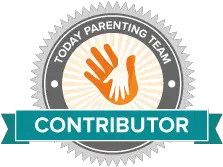FREE PREGNANCY CHALLENGE: say bye-bye to harsh chemicals & toxins.
Green Baby Deals is reader-supported. When you buy through links on our site, we may earn an affiliate commission. As an Amazon Associate, we earn from qualifying purchases. Learn more.
Connect with others from pregnancy through motherhood (on a free app). Join community now.

Okay, you’ve committed to flat diapers (Grandma is proud!), but how in the world do you fold them so there’s no leaking?
Side note: going with cloth diapers is the epitome of saving $$$ and being green, so I’m psyched you’re here.
Why choose flat diapers? Admittedly, I mostly went with the Bumgenius Freetime All-in-One for my babies. Being in daycare, they were convenient and easy-to-use for the caretakers.
But since the diapers were one-size-fits-all, there were some struggles along the way as they grew.
Benefits of Flat Cloth Diapers
1. Cost
Did you know the average child will use a few thousand diapers during their life? Disposable diapers will burn a hole in your pocket.
Even the convenient prefolds and all-in-one cloth diapers add up. The flat diapers win in the cost category.
2. Sustainability
Regular diapers make up approximately 3.4 million tons of landfills, so you’ll be doing your part to reduce single-use waste.
Flats are a cool, back-in-the-day type of cloth diapering. You can literally use anything: t-shirt, towel, etc.
Most mamas go with something more absorbent like these bamboo/organic cotton flats or make your own flats with this 100% GOTS organic cotton fleece.
But gone are the days of rubber pants and safety pins (ouch). Now you’ve got waterproof diaper covers and Snappi cloth diaper fasteners.
And, once you’re done using the flats or prefolds for diapers (or you have extra), they’re also awesome for things like:
- Burp cloths (typically overpriced and non-absorbent).
- Putting underneath your baby while changing a diaper (more about diaper changing and avoiding diaper rash here).
- Keeping a few in your diaper bag for on-the-go spills or runny noses.
- Rags — from dusting to washing and drying the car. When your babies get a little older and ready to clean the house, it’s a great recycling lesson.
- Endless uses for these with babies, toddlers and preschoolers.
3. Versatility
One of the great things about flat diapers is you can choose a fold to suit your specific needs.
From tummy sleepers to babies who sleep on their backs, there’s a fold for every preference.
You also have greater control over which areas have more absorbency by adding another layer.
Flat Diapers vs. Prefolds
It took me a bit to wrap my pregnancy brain around this, but it’s simple.
The flat diapers are a large flat cloth. Because there’s more fabric, there are more options with folding.
The prefolds are a pre-sewn fabric with typically more layers in the middle (i.e. the wet zone). Hence, you don’t need to “pre-fold” the flat fabric — just go right to the diaper wrap/fold.
Sometimes they’re labeled by layers. Example: 4x8x4 means 4 layers of fabric on each side and 8 in the middle.
There are pros and cons to each:
Flat Diaper
PROS: Less expensive, allows a more custom fit, washes and dries faster.
CONS: Can be less absorbent than a prefold, more time-consuming to fold.
TIP: If you’re on a tight budget and know your way around a sewing machine, turn your flats into prefolds with this awesome tutorial.
Prefold Diaper
PROS: No extra folding, super absorbent.
CONS: Pricier than flats, not customizable, takes longer to dry.
TIP: My fave prefold is 100% GOTS organic prefolds found here.
Note: whichever you choose, you’ll need waterproof diaper covers.
How Do I Fold Flat & Prefold Diapers?
I feel like there are a gazillion types of folds you can find online, enough to make your head spin. So I’ve narrowed it down to 4 folds that are classic and work:
- Jelly Roll
- Angel Wing
- Bikini Twist
- Newspaper
Once you’ve nailed down a few different types of folds, you’ll be able to do them in your sleep… wait you have time for sleep? 😉
Remember with all of these folds, cover with a waterproof diaper cover.
To better show you the folds, I’m using a napkin here. You’ll want something more absorbent (and something you don’t use to wipe your mouth).
Note: all of these folds can be used for flats and prefolds. Since a flat has more fabric, you can either 1. fold the flat to the size and shape of a prefold or 2. give more layers/folds where needed (noted below).
1. Jelly Roll Fold
The jelly roll gives extra support on the sides, which is great for breastfed babies and their less-solid poops.
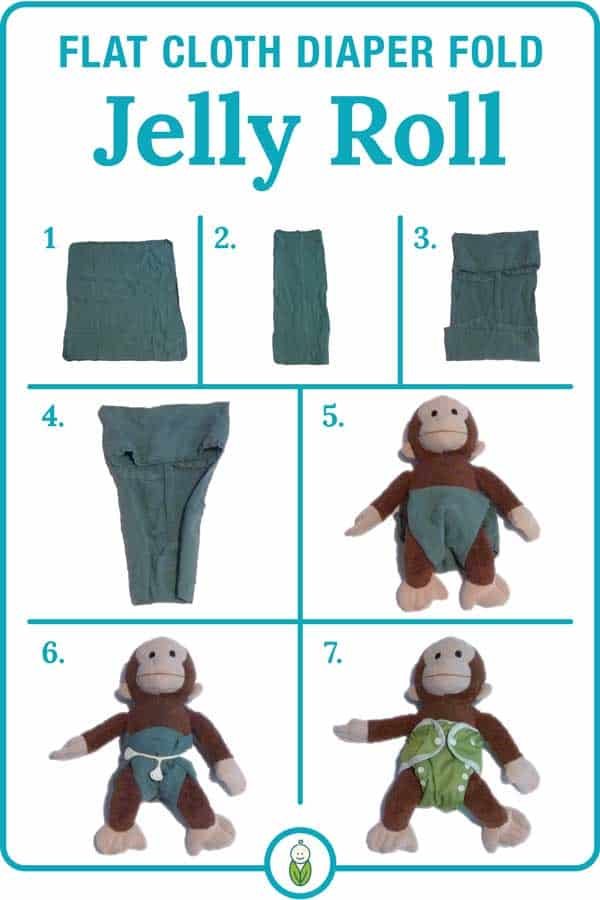
- Lay the diaper out flat on a suitable surface making sure it’s lying vertically.
- (For flats only:) Fold into thirds depending on the size of your baby.
- Fold down the back to create a “poop pocket” and fold the front if there’s still extra fabric.
- Roll up both of the two front corners/sides toward the center, creating a gusset.
- Keep the back part flat. Fold up the front part onto your baby.
- Wrap the back part on top of front and attach with fastener. Tuck in sides as needed for a secure fit.
- Cover with a waterproof diaper cover.
2. Angel Wing Fold
Aptly named for the angel wing shapes the side sections of the fold create around your baby’s waist, this is another fold to have in your collection.
It’s one of most common (and simplest) folds.

- Lay the diaper out flat on a suitable surface making sure it’s lying vertically.
- Fold into thirds (or more for larger flats) depending on the size of your baby.
- Fold up the front.
- Fold out the two back flaps to create the wings.
- Fold up the front part onto your baby.
- Wrap the back part on top of front and attach with fastener. Tuck in sides as needed for a secure fit.
- Cover with a waterproof diaper cover.
3. Bikini Twist Fold
The bikini fold is similar to the Angel Wing fold but with a twist (literally).
Have a baby with chunky thighs? …awww I miss that… this might be the fold for you. It may also work better for baby girls, giving absorption where it’s needed the most.
Some love it, and some say it makes a poop diaper too messy to clean.
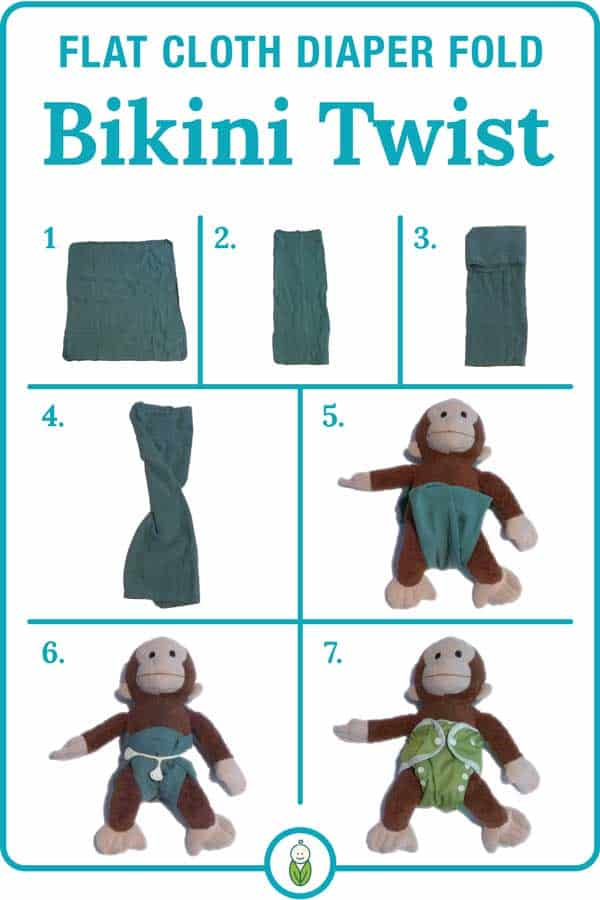
- Lay the diaper out flat on a suitable surface making sure it’s lying vertically.
- (For flats only:) Fold into thirds depending on the size of your baby.
- Twist the diaper at the bottom 180° so that you can see a visible crossover where the cloth twists.
- Making sure that the twist of the diaper stays between your baby’s legs, fold up the front part onto your baby. (Fold over once if there’s extra fabric in the front.)
- Wrap the back part on top of front and attach with fastener. Tuck in sides as needed for a secure fit.
- Cover with a waterproof diaper cover.
4. Newspaper Fold
Anyone remember newspapers? Anyone? Just like newspapers, this is a classic. Very similar to the Angel Wing fold, but the sides tuck into the front fold (like a newspaper of course).
This one gives a ton of support in the front, but may be trickier with an impatient baby yikes.
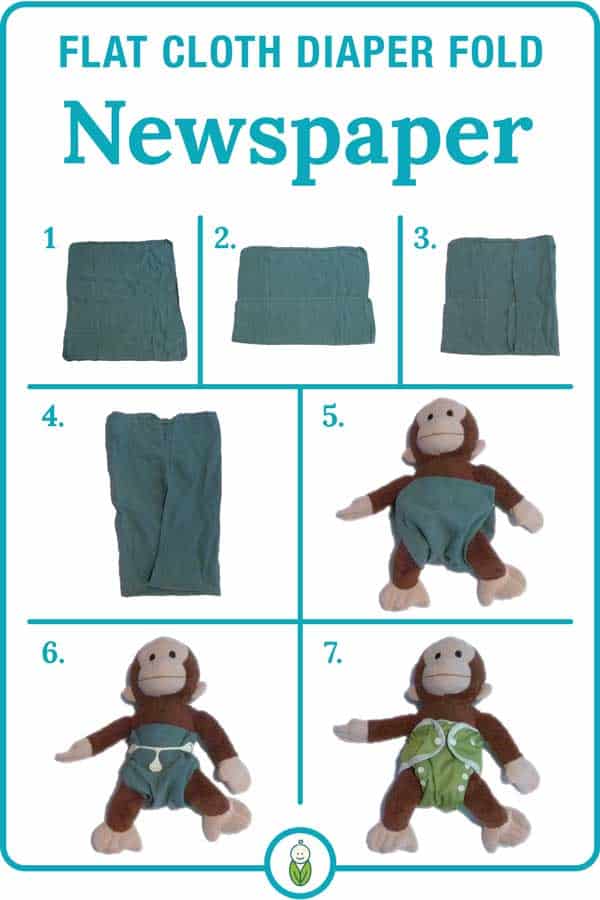
- Lay the diaper out flat on a suitable surface making sure it’s lying vertically.
- Fold the front section up.
- Fold one of the front corners/sides over the center fold.
- Fold the other front corner/side and tuck it into the other folded side.
- Fold out the sides on the back part (so you have enough to wrap around the front). Fold up the front part onto your baby.
- Wrap the back part on top of front and attach with fastener. Tuck in sides as needed for a secure fit.
- Cover with a waterproof diaper cover.
Cloth Diaper Accessories
Here are a few things you’ll need with your cloth diapering adventure:
1. Organic cotton fleece
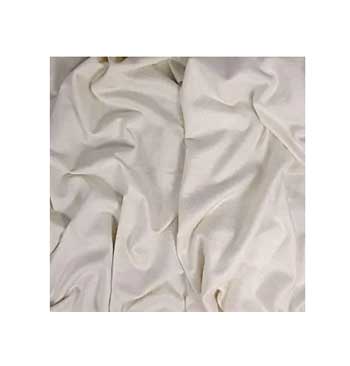
Save some serious cash by cutting your own cloth diapers. Fleece is superior with absorption and this one’s 100% GOTS certified organic cotton.
Prefer Etsy? A similar one is available.
2. Flat Cloth Diapers
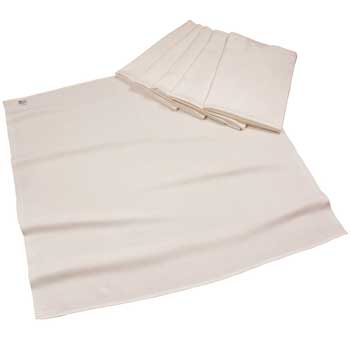
If you’re not ready to cut your own cloth, go with a 6-pack pre-cut. Bamboo is also super absorbent. OsoCozy flat cloth diapers are made with 70% bamboo and 30% organic cotton.
3. Organic Cloth diaper prefolds

The prefolds make it even easier, but you’ll find you’ll need to buy more as your baby grows. The OsoCozy prefolds are 100% GOTS certified organic cotton.
4. Snappi Cloth Diaper Fasteners
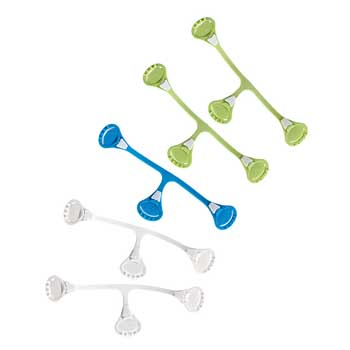
Goodbye pins and hello Snappis. These were my go-to and I bought all of mine used. They’re also available on Amazon if you prefer.
Also check out these stretchy diaper fasteners on Etsy:
5. Cloth diaper covers
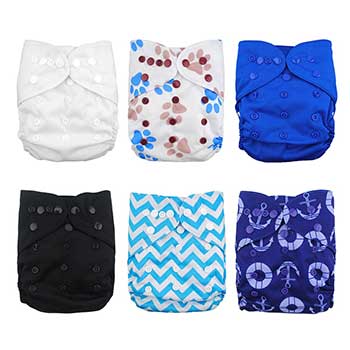
The last thing you’ll need are the cloth diaper covers. Choose one with adjustable snaps for the best fit. I also always go with the “one size” so you don’t need new covers as your baby grows.
SImilar one-size covers can be found on Etsy.
Flat Diaper FAQs
What’s the difference between prefold and flat cloth diapers?
Here’s the difference between prefold and flat cloth diapers: a prefold is a pre-sewn fabric with more layers in the middle and a flat cloth diaper is a large flat cloth.
Are prefolds better than flats?
Prefolds can be better than flats depending on your goal. Prefold diaper inserts are typically easier and quicker. Flat diaper inserts are more customizable, less expensive and dry faster.
Are flats more absorbent than prefolds?
Yes, flat inserts can be more absorbent than prefold inserts. It really depends on the way you fold them and the fabric you use. The most absorbent fabrics for diaper inserts are hemp, bamboo and Zorb.
How many diaper covers do I need for flats?
It’s a good estimation to have one diaper cover for every three cloth diapers. Because ideally you won’t need to wash your diaper covers as often as your inserts, less covers are typically needed.
Although covers may not need to be washed every time, it’s best to give them a quick rinse after use and hang to dry.
Do I need newborn prefolds?
No, you don’t necessarily need to purchase newborn prefold inserts. You can cut your own flat inserts to be smaller or you can purchase smaller prefold inserts for the newborn stage.
What size is a flat diaper?
The typical size of a flat diaper is 27″ x 30″, but it depends on the brand. Sizes can range anywhere from 22″-32″ x 27″-35″.
Flat diaper inserts will often shrink after washing, although this depends on the fabric. Manufacturers should always state the “actual size” and “post-wash size” in their description.
How do you fold cloth diapers for storage?
The best way to fold cloth diapers for storage is to tuck in the flaps to the center and fold diapers over one or two times. If you’re using flats, covers and Snappis, it’s easiest to keep them all together. I also pre-fold the diapers so they’re ready to go when it’s changing time.
Flat Diaper Wrap-Up
- Larger flat cloth diapers are going to be the best option for using different folds. And, the larger the size of the material, the easier it will be for you to practice with.
- When wrapping, always keep the back part of the flat a little higher (belly-button level) than the front (a little below the belly button).
- Consider practicing on stuffed animals or toys, as babies can be wriggly little things.
- This is a bit of a trial and error: depending on your baby’s size, build, gender (and poops!), one fold might work way better than another.
- Don’t forget — all of these items (especially the covers and Snappis) can be bought used to save even more $$$.
Happy folding — if flat diapers were good enough for generations ago, it’s good enough for us.
With a bit of practice, you’ll be able to fold a flat diaper faster than a crawling baby.
That’s all there is to it, mamas. Congrats on taking one more easy step toward living a safer greener life for you and baby.
Peace love & baby kicks.
Care to share?
“Creating my natural baby registry will be fun & stress-free.”
— said no mama, ever.
Let’s get real.
Up Next:
• Prevent Diaper Rash (and Cancer) the Non-Toxic, Talc-Free Way
• The Best Non-Toxic Diapers (great for newborn stage)
About the Author
Jen Brady — Chief Green Mama
Mom of two. Wife of one. Holistic nutritional consultant. Amateur biohacker. Guide of the Green Yourself Pregnancy Challenge. Author of the Green Your Baby Registry Guide.
I'm wild about pregnancy and babies (in a sane way) and I need to steer you away from harsh chemicals and hormone disruptors. Stick with me to keep it lean and green.

